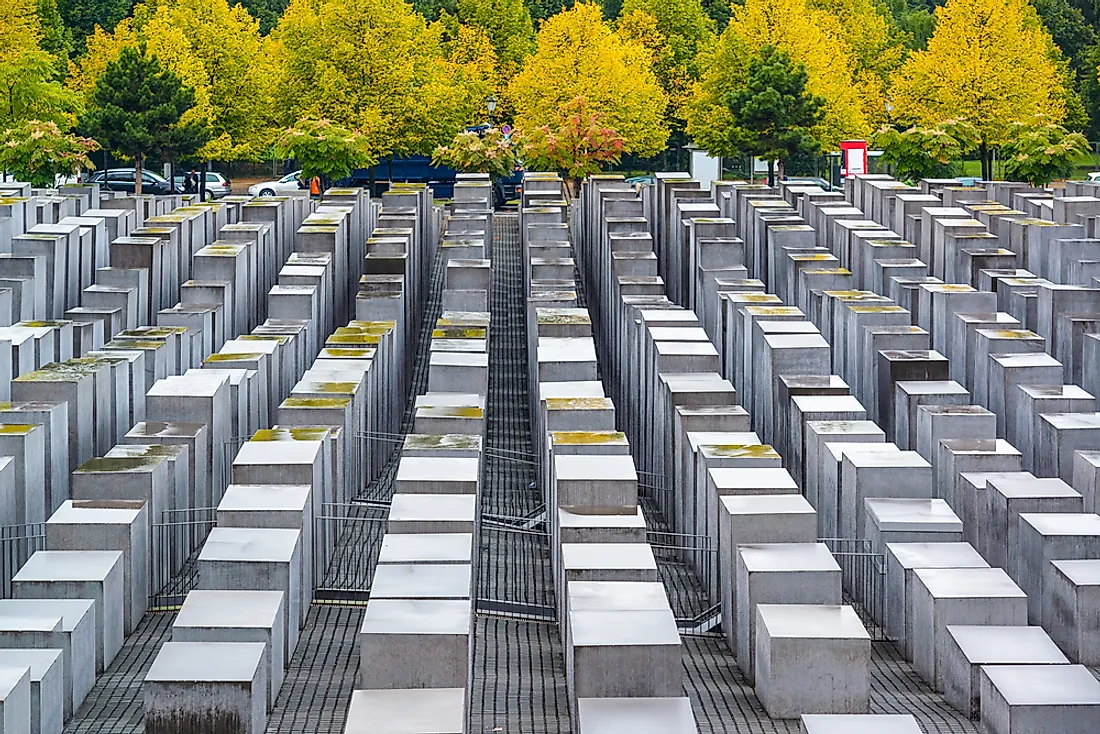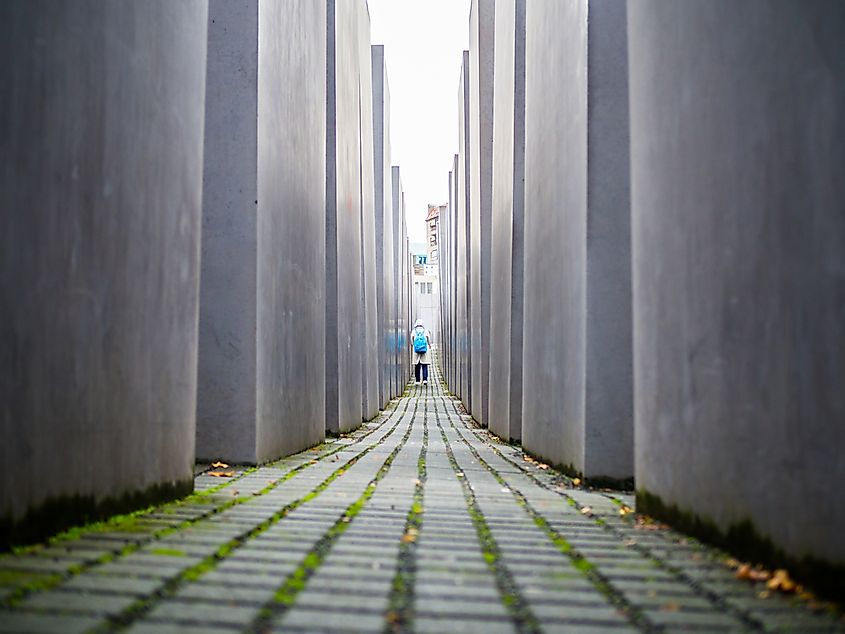Memorial to the Murdered Jews of Europe, Berlin

In the middle of Berlin lies the Memorial to the Murdered Jews of Europe, designed by an American architect Peter Eisenman. It is a piece of architecture and a commemorative space that is dedicated to the millions of lives lost during the holocaust of World War II. The site is designed to awaken feelings of tragic loss and trauma, but also serves as a reminder to those who remain that this part of the world’s history should never repeat itself.
Creation of the Memorial Site
It took six years from the initial incentives for the memorial site until its completion and public opening in 2005. German parliament launched a worldwide competition for the design of the monument site in 1999 and decided to entrust the work to Eisenman.
The magnitude of the monument is undoubtedly representative of the symbolism connected to one of the most grievous events in human history. The site is filled by 2711 concrete slabs, stretching across 204,440 square feet, each one a little bit different than the other. The gigantic structure can be approached from all sides and allows for a complete immersion of the visitors in the experience.
One of the unique points is the absence of a focal point that is typical for memorial sites evoking a different experience as visitors walk between the concrete slabs. The author of the piece decided not to inscribe victims names into the slabs to elicit an entirely personal experience of this dark narrative and to enunciate the vastness of trauma behind the anonymity.
Description of the Holocaust Memorial

Eisenman’s use of individually placed slabs (pl. stelae) on a sloping surface of the memorial site creates an illusion of waves when it’s observed from above. The use of stone slabs (Lat. stele), has been recorded throughout history as a way to honor those who have passed. Although typically, ancient slabs would contain the name of those who have departed, Eisenman decided against the inscription.
Not only do the slabs not contain any names or symbols, but the entirety of the memorial site is entirely devoid of any symbols, panels or signs. Many have collated the shape and appearance of the stones to those of gravestones.
Those who decide to visit the Memorial to the Murdered Jews of Europe will find themselves walking on the cobblestone passageways in between the towering stelae. The footpaths have been created in a labyrinth-like manner to elicit the feelings of disorientation and loss.
Information Underground
Although the memorial site above ground does not offer any information regarding the history and meaning behind it, it does, however, feature an underground information center placed directly under the undulating stones.
The architect created a chain of rooms that feature different types of information about the Holocaust victims, including short biographies. The rooms have been given different names according to the themes that were envisioned to complement the above-ground Memorial. The Room of Names, the Room of Sites, the Room of Dimensions, and the Room of Families each represent different ways to visualize and commemorate the victims. Even though Eisenman was initially against the creation of the information center, claiming that the world is already too full of information, he agreed to design it in the end.











